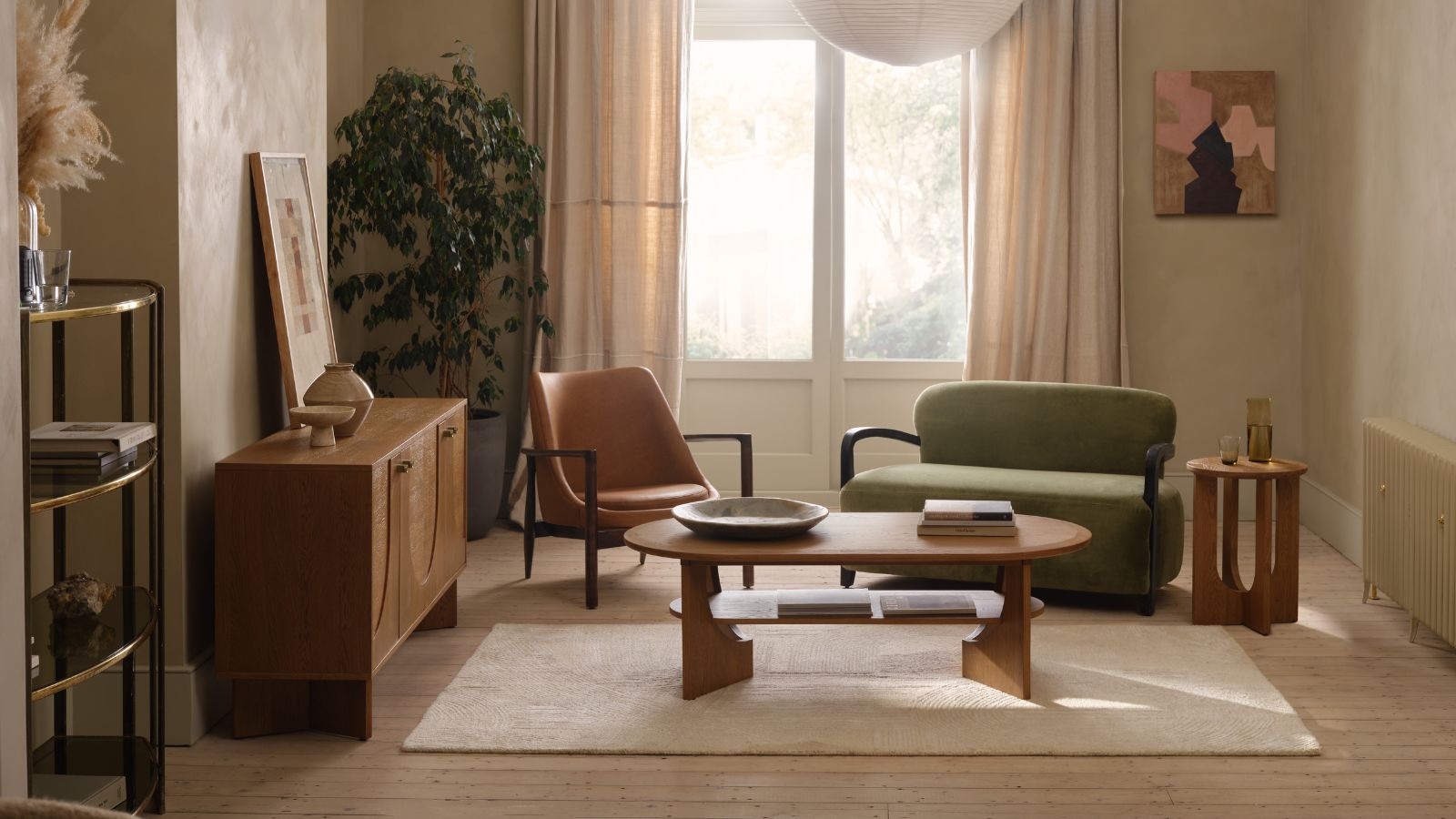How to design a garden for a contemporary home that seamlessly blends inside and out
Take indoor-outdoor living to the next level by choosing a contemporary design that flows smoothly from one to the other
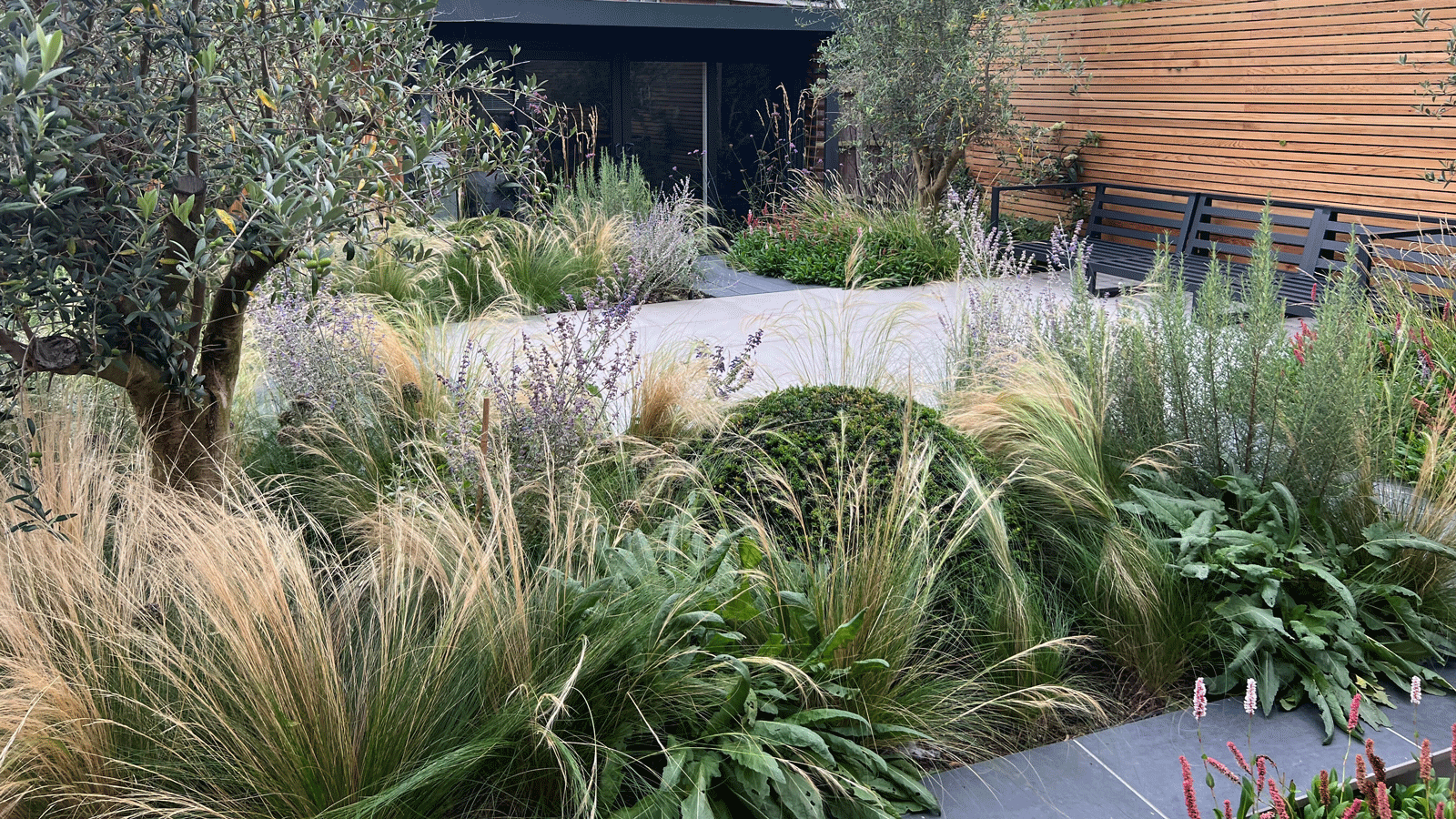
The connection between house and garden is key in contemporary landscaping design. If you're interested in finding out how to design a garden for a contemporary home, the ideal is an outdoor space designed to complement both your interior decor and your lifestyle.
The signature look for contemporary landscaping tends to be a combination of clean lines, geometric shapes, angular water features and sculptural planting. Designs are streamlined and tend to feature modern hard landscaping choices such as concrete or stone, combined with raised beds with uniform planting of only one or two varieties.
There is now also a trend for modern garden design that features much more relaxed and abundant planting in place of the clipped look, with less hardscaping and structured elements, and an altogether wilder and more sustainable feel. We asked some expert garden designers to share their ideas on how to design a garden for a contemporary home going forward and this is what they suggested.
1. Aim for a harmonious flow between house and garden
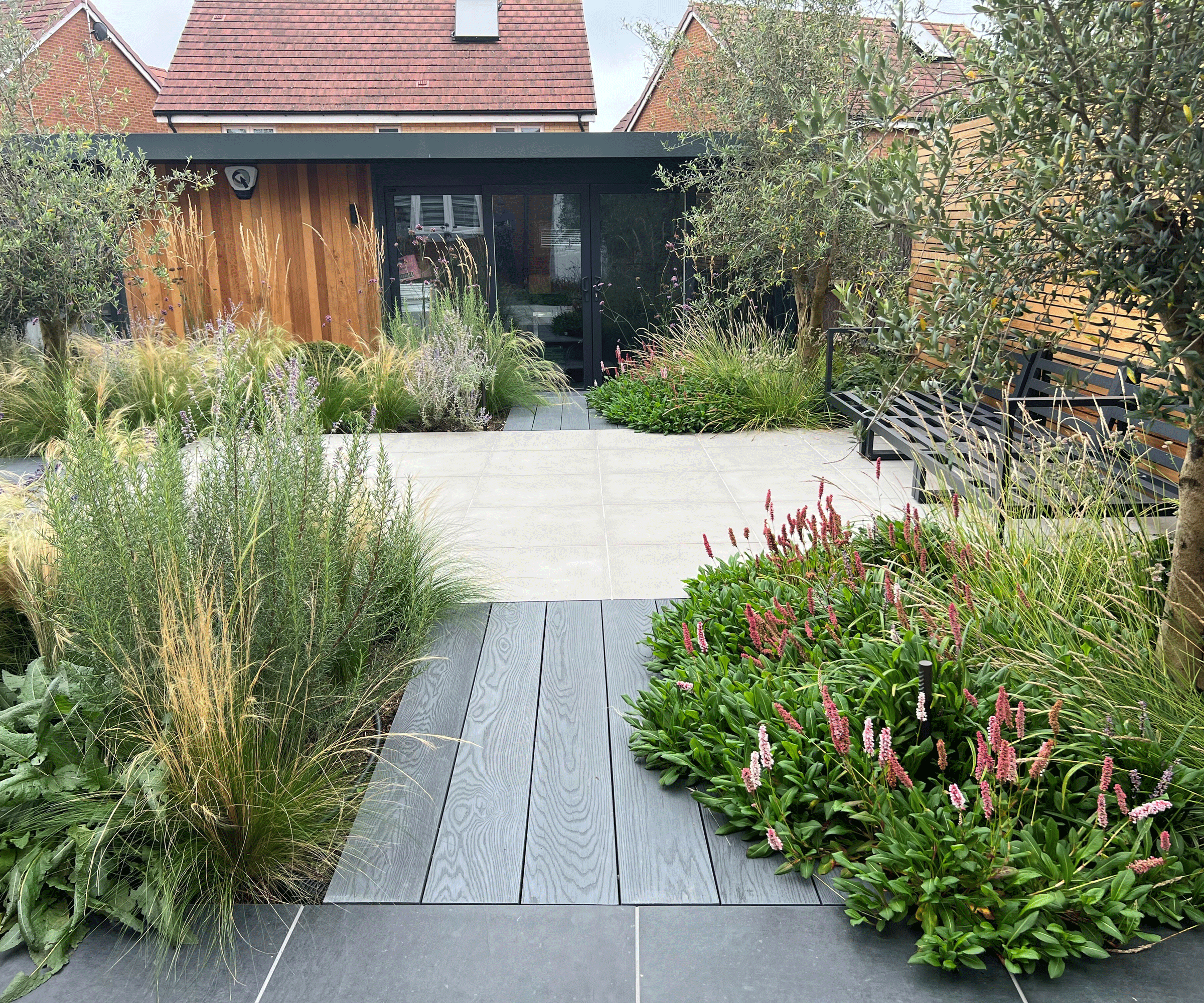
This residential design-and-build project by landscape designer James Scott received the prestigious Principal Award for Design Excellence from the British Association of Landscape Industries (BALI). The modern, new-build property’s rear garden was re-imagined into a stylish outdoor space, balancing family-friendly functionality with elegance and sophistication for entertaining guests.
"Our goal was to create a harmonious flow between the house and garden, reflecting the clients' desire for a cohesive, stylish environment," explains James. The design demonstrates James's skill in creating a tranquil space that transitions from a quiet garden for relaxation to one that can accommodate large groups for entertaining. One of the benefits of working with a landscape designer is access to expertise like this.
"It was important to create a cohesive and flowing scheme in keeping with the modern house and style aspirations of the clients," says James. "Soft landscaping was an essential component of the design. We built in a ratio of 1/3 of planting to 2/3 of hard landscaping, providing a good balance between greenery and hard surfaces. This contributes to the overall feeling of calm and relaxation."

James Scott founded The Garden Company in 1991. As MD and Principal Designer, he has led the company to win multiple awards for both design excellence and landscaping craftmanship. With a strong focus on sustainability, James is dedicated to creating places that celebrate nature. He is an Accreditor for the Society of Garden, and Landscape Designers and serves on the judging panel for both SGLD and Pro Landscaper Awards.
2. Make geometric lines a key element
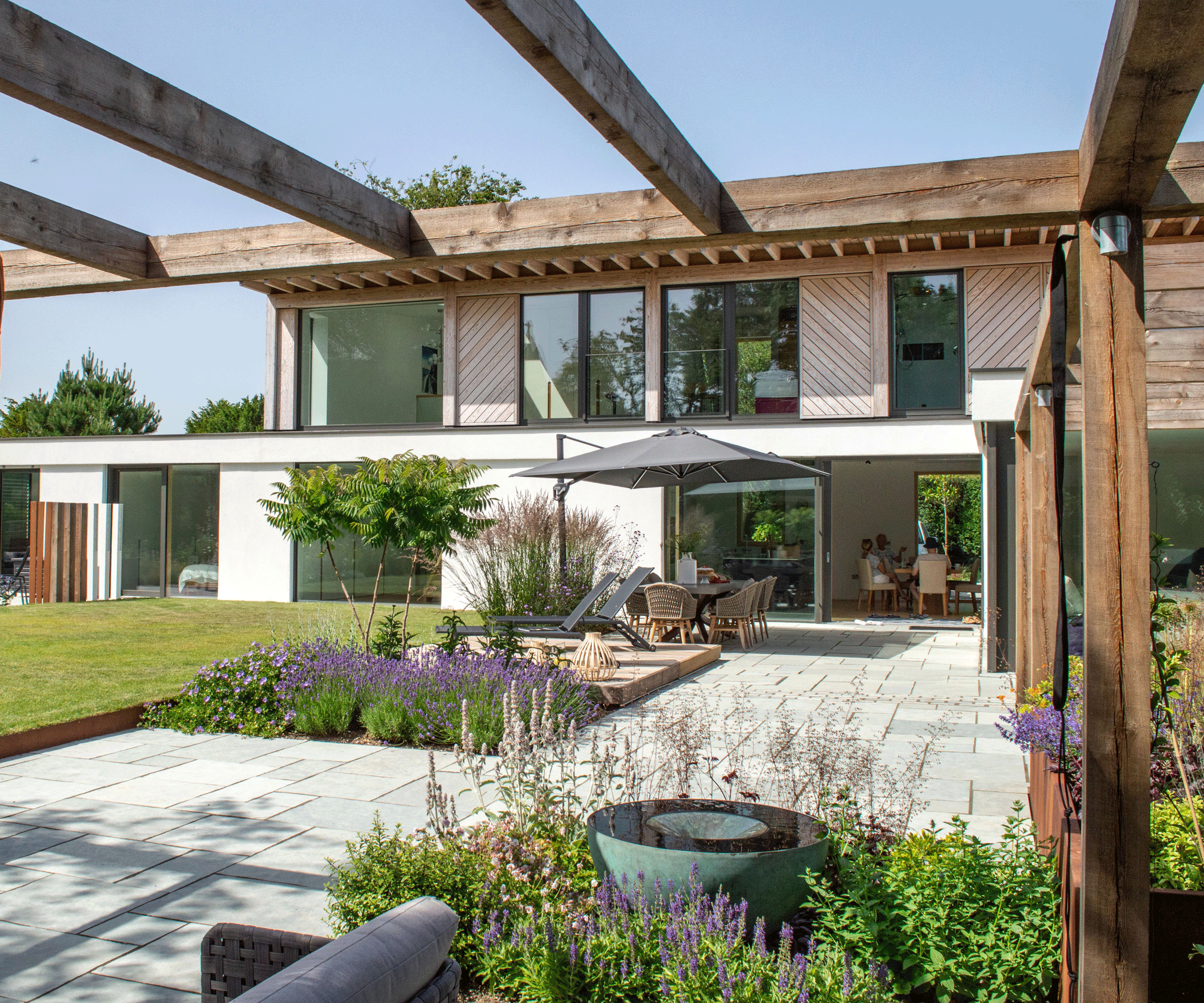
A well-designed external space should work hard for you no matter what its size. "In the same way as you’d approach a room in a house, every element in the garden needs to be carefully considered, from the floor to the walls, the ceiling and the lighting through to the furnishings and the ornaments. Each component makes the whole, to provide a harmonious conclusion," explains architectural landscaper Neil Jones. "For this reason I prefer to tackle whole garden projects so the entire space can be carefully considered as one."
This new-build house by Neil was completed in 2020 and has won several awards. "It showcases clean geometric lines, strong form and a refined materials palette of concrete, timber and corten steel," says Neil. The garden was designed to respond directly to the architecture and internal layout of the house.
"The pergola provides dappled shade and enclosure to the decking in front of the garden room before turning 90 degrees to frame the main seating area and outdoor fireplace. We used Siberian Larch due to its structural strength for the long spans required and to match the cladding on the house."
The planting design is contemporary to complement the house with blocks of bold planting such as the ornamental grass Calamagrostis 'Karl Foerster' and lavender, with blue and purple highlights to reflect the interior colour scheme, providing yet another example of continuity with the house.

Neil Jones studied Landscape Architecture both at degree and postgraduate level. He is accredited to the industry's leading professional bodies, successfully gaining Chartership to the Landscape Institute and a Pre-Registered Member of the Society of Garden Designers. He is also an accredited Gardener Designer of the Association of Professional Landscapers (APL).
3. Invite nature inside (and enjoy it looking out)
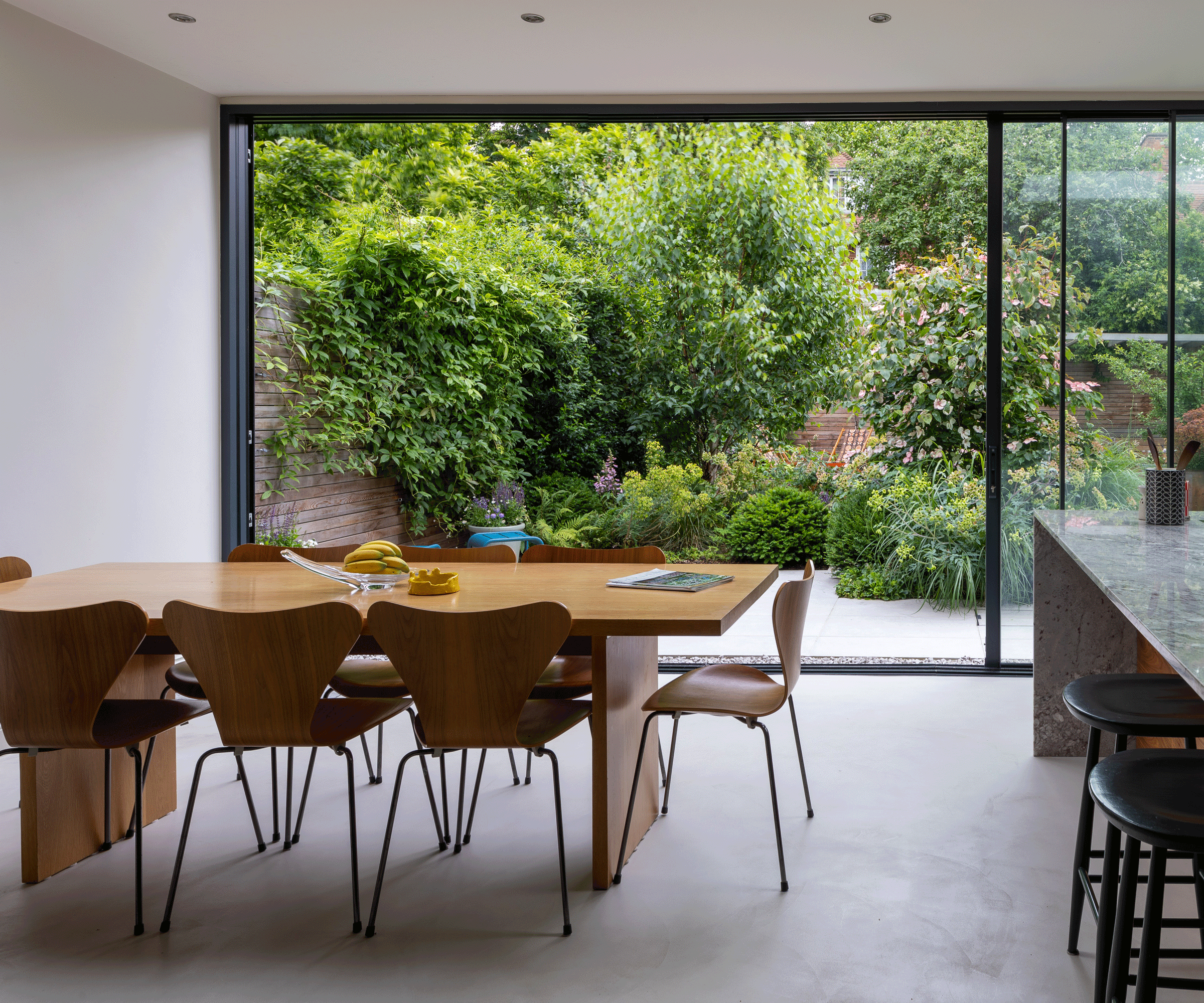
Working closely with her client during the house renovations from the planning stage onwards, garden designer Natasha Nuttall has created a cohesive contemporary space that smoothly links interior and exterior.
"With new panoramic glass sliding doors that fill the whole width of the house extension, it was essential to link the spaces with a seamless flow and offer spectacular year-round views to the garden," says Natasha. "The clean, crisp geometry of the paving and gravel is softened by generous areas of abundant planting that’s been designed to be attractive to pollinators."
A real sense of indoor-outdoor living allows for free-flow, turning the large kitchen/living area into a ‘room with a view’, bringing the garden towards you and enticing you outside. Climbing roses, jasmine and Akebia quinata (chocolate vine) scramble over boundaries and scent the evening air, making the garden a delightful place to be.
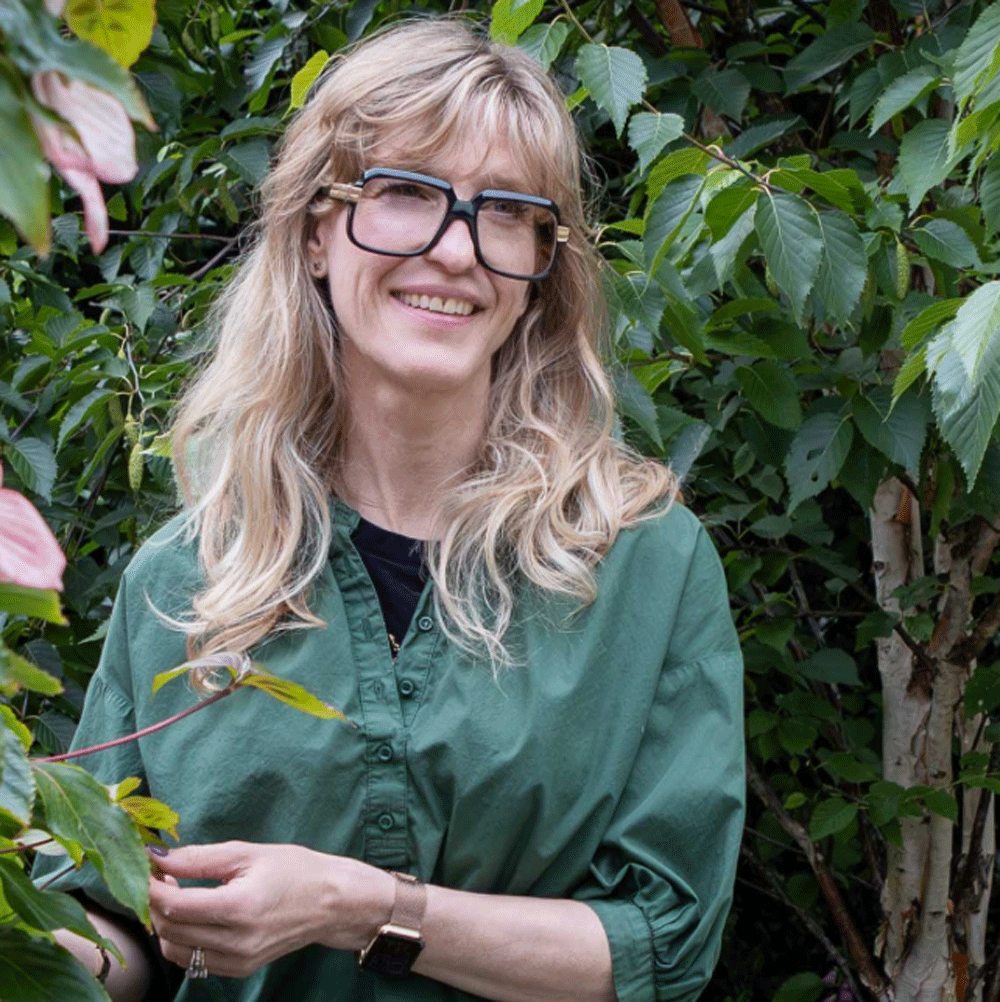
Natasha Nuttall Garden Design is a garden and landscape design studio based in London. Known for their bold designs, which feature imaginative details and a strong sense of geometry, the multi-layered green planting schemes connect the indoors and outdoors.
4. Streamline your choices
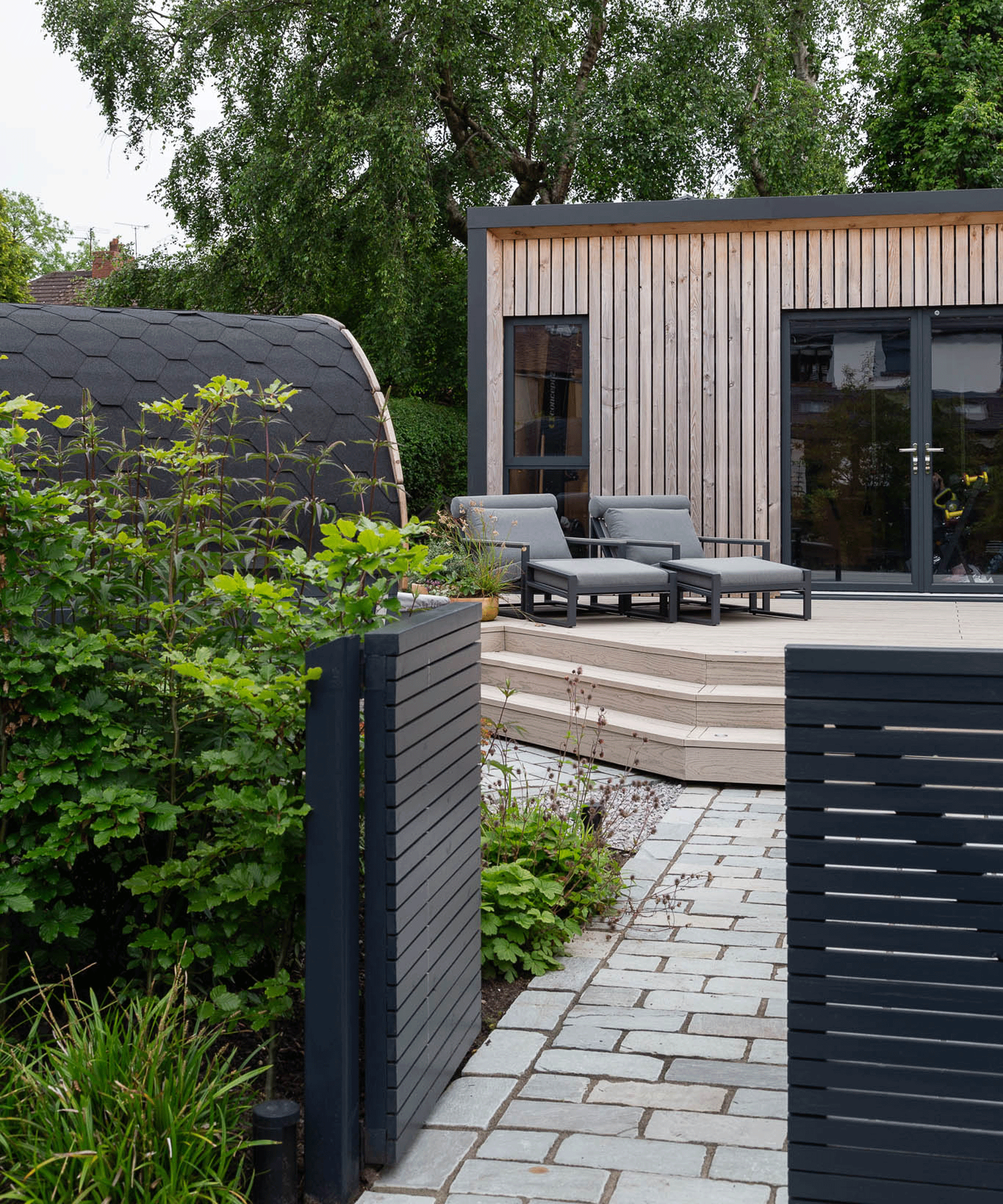
When considering how to design a garden for a contemporary home it's often a case of less is more. This means streamlining your choices in terms of how many different materials, colours and even plants you select.
"Choose natural materials like wood and stone, in neutral colours that complement the surroundings," suggests garden designer Rosie Wilkins. "Rather than using lots of materials, try limiting yourself to just one or two, and explore how you can use them in different forms and finishes."
Wood, for example, can be used for benches, walkways and screens for a modern look. This approach will give you a space of depth and interest while maintaining simplicity and cohesion. The aim is to create a garden that works with your lifestyle and feels like a natural extension to your home.

Rosie Wilkins studied Landscape Architecture at the University of Sheffield, and now heads up Rosie Wilkins Landscape Design. She enjoys working on both domestic and small public projects.
5. Include some hi-tech touches
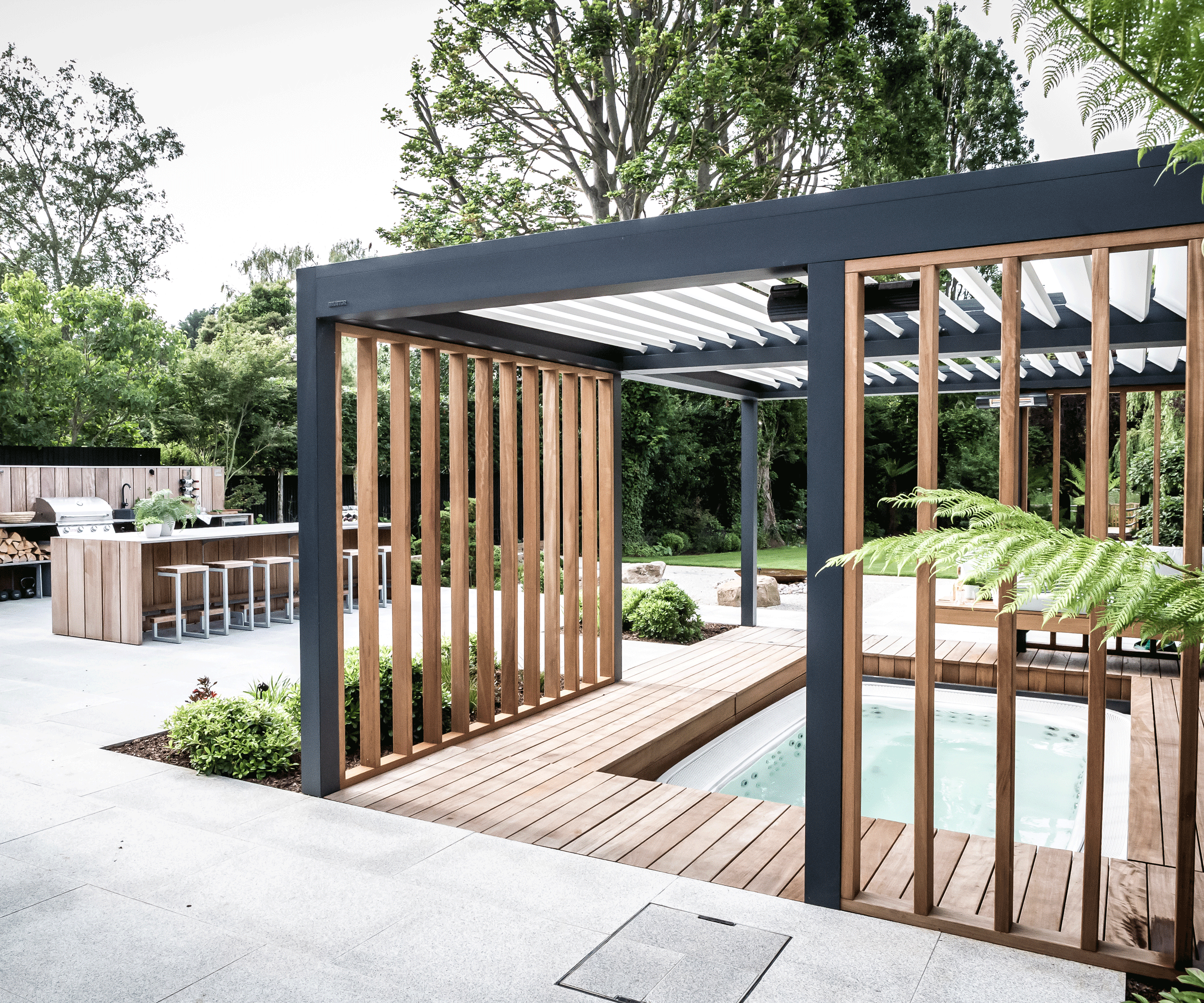
Creating a seamless outdoor living experience is at the heart of this luxury garden renovation in Oxfordshire. Mark Latchford, lead architect/designer at HollandGreen, designed a fully equipped outdoor kitchen, creating a dream space that caters for al fresco dining and entertaining.
There are plenty of clever touches in this Balinese-inspired design. An outdoor kitchen functions as part of the wider garden space for entertaining, seamlessly flowing into a luxury pergola seating area with a hidden hot tub below the sliding deck. For a garden design like this one you might like to consider swimming pool ideas too.
The open plan cooking space is fitted with a woodburning pizza oven, gas BBQ and mini fridge, and features a 12-seater bar table, which becomes a focal point when hosting friends.
Built-in heaters, speakers and lighting makes for an intimate atmosphere for nighttime entertaining. Spotlights were integrated into the pergola frame above, while hidden LED strip-lights glow beneath the floating bench and inside the hot tub itself.
6. Choose a sustainable contemporary design
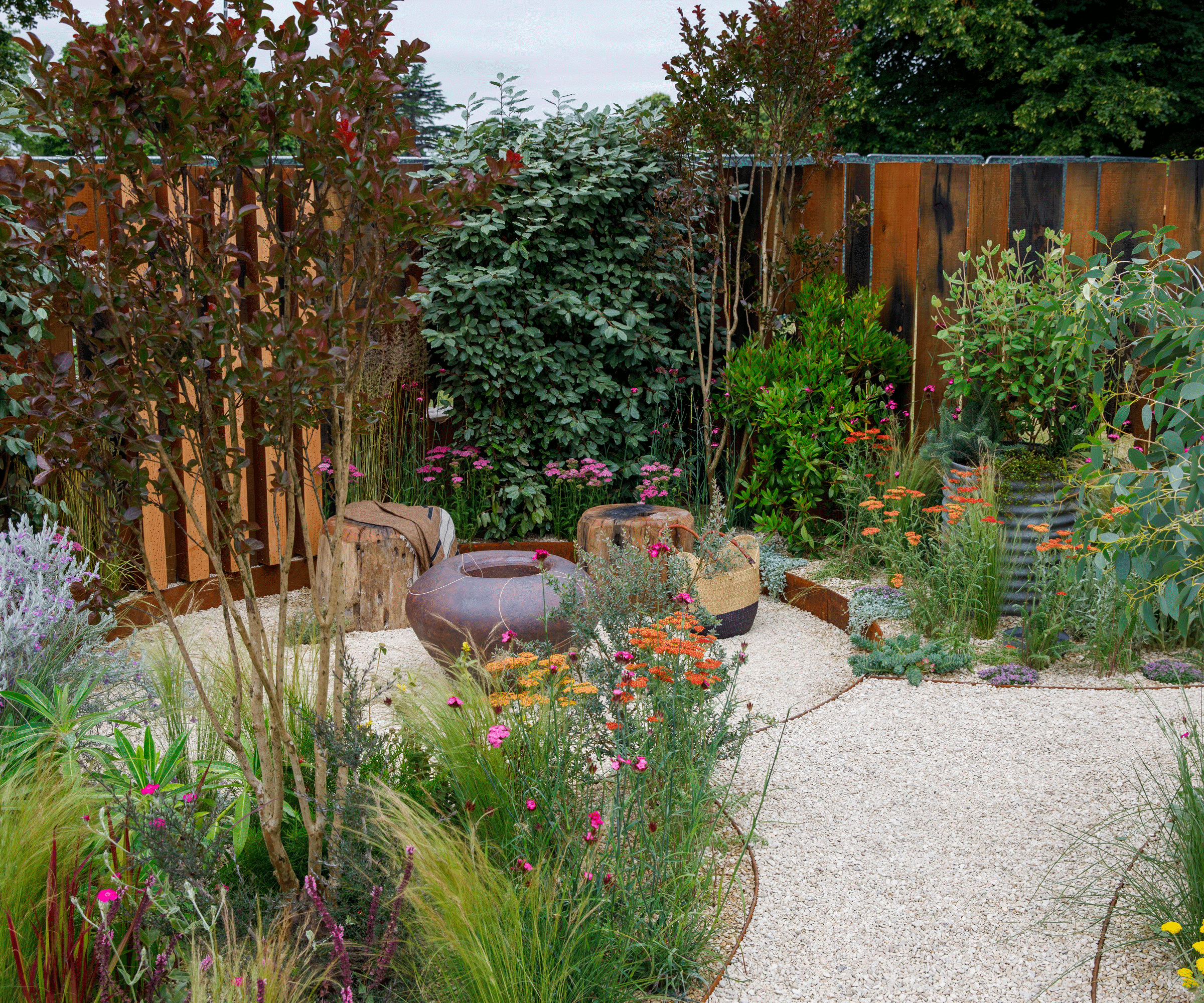
If you're thinking about how to design a garden for a contemporary home there's never been a better time to put climate-forward ideas at the top of your wish-list. It's the perfect opportunity to include elements such as a thoughtful planting plan and eco-landscaping ideas to encourage bio-diversity.
This award-winning sustainable garden design by Melanie Hick showcases climate-friendly ideas for gardening in a changing climate. Melanie used drought-friendly plants grown in porous gravel that creates a soakaway for heavy rain.
The habitat poles used as a boundary idea are created from reclaimed timber and are used to encourage biodiversity, quickly becoming home to pollinators. Although the planting style of this garden is relaxed and natural it feels very contemporary, as does the use of reclaimed materials as design features.
There are so many inspiring eco homes ideas to choose from that perfectly blend style and sustainability that you're sure to find something that resonates.

MHGD is a bespoke outdoor living studio led by Melanie Hick. Based in London, UK, Melanie creates luxury outdoor retreats in large gardens that invite you to connect, entertain, relax and play. Melanie's designs balance nature and contemporary living, encouraging people out into the garden. She selects and supplies plants that thrive with climate resilience in mind.
7. Use contemporary hardscaping materials
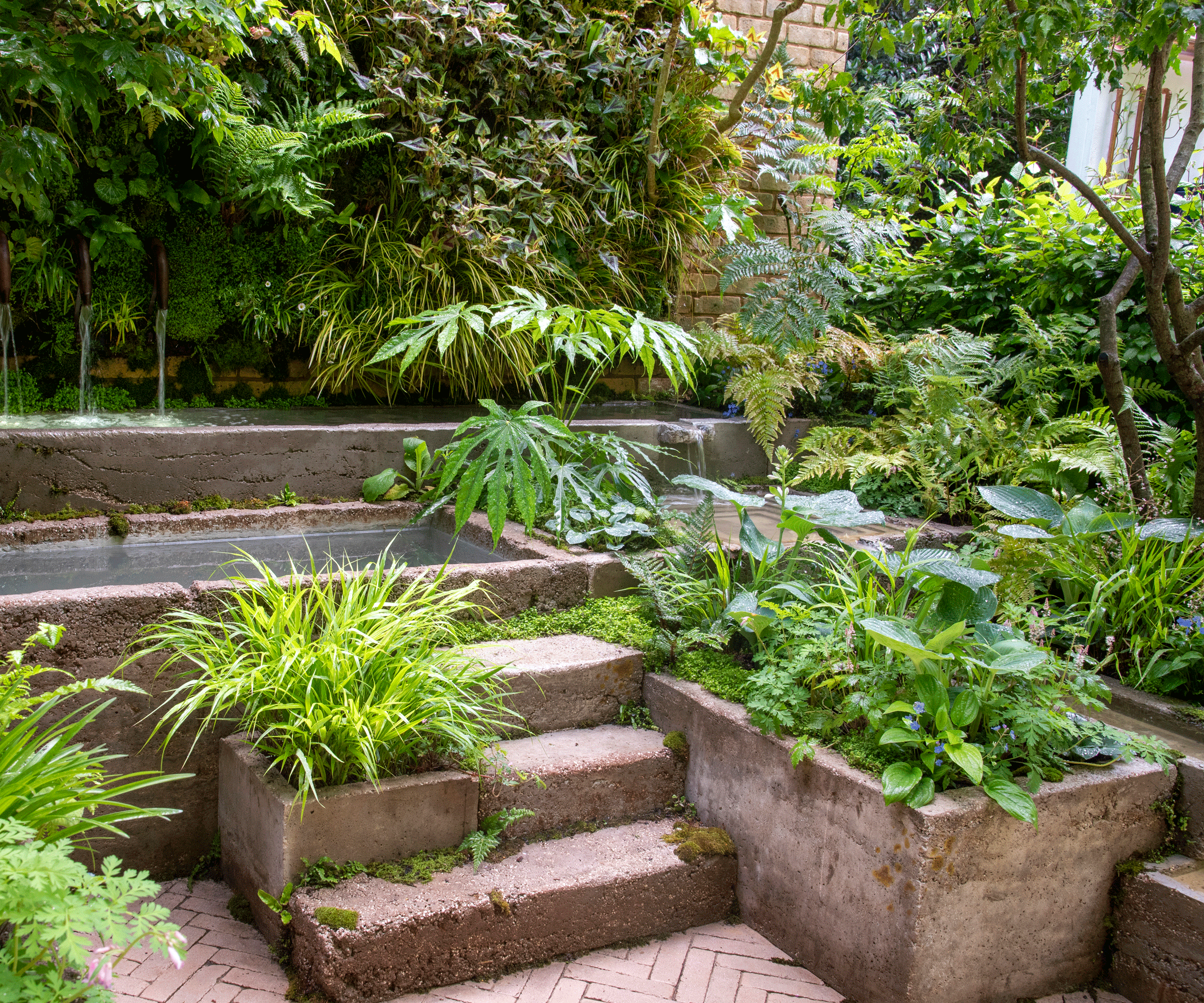
Concrete is on trend for contemporary gardens right now, especially concrete paving ideas, thanks to its versatility in terms of both the forms it can take as well as the tonal variety available. Stone and modern paving are the other go-to choices but it's also worth looking into using the latest hardscaping materials to give your garden design the edge.
The weathered texture of these contemporary looking planters, steps and water feature have a minimalist feel. They are made from a lightweight, sustainable material called hyper-tufa, which is a combination of Perlite, coconut coir, and cement. It's very hardwearing and will last for over 30 years, even in very cold weather. Even better you can make it in your own garden.
This award-winning courtyard design by designer and landscape construction consultant Tom Bannister illustrates how the right hard landscaping can be integrated seamlessly with nature in even the smallest of gardens.

Having worked in the horticulture industry for almost 17 years, Tom Banister has been involved with everything from complex hard landscaping and groundwork installations to nursery management and intricate planting schemes on award-winning show gardens at RHS Malvern, RHS Hampton Court, and RHS Chelsea. Tom trained at The London College Of Garden Design based in The Royal Botanic Gardens, Kew.
FAQS
What are the best lighting ideas for a contemporary garden?
When looking into the best garden lighting ideas for a contemporary garden the best advice is to treat the outdoors like the indoors. If you’re considering suspending a light over an outside table, for example, the same rules apply as with a dining table indoors, in that is should sit approximately 75-85cm above the table.
Try using a combination of different types of lighting at different levels to create the right feel, exactly as you would indoors. Consider recessed lighting, decorative lanterns, and outdoor floor lamps to create pools of light at different levels for a relaxed atmosphere.
Pay particular attention to decking lighting ideas and patio lighting ideas, as these tend to be the most used areas of the garden at night.
Now you know how to design a garden for a contemporary home look at more garden landscaping ideas to help you create your very own dream space.
Get the Homebuilding & Renovating Newsletter
Bring your dream home to life with expert advice, how to guides and design inspiration. Sign up for our newsletter and get two free tickets to a Homebuilding & Renovating Show near you.

Lifestyle journalist Sarah Wilson writes about flowers, plants, garden design and gardening trends for Homes & Gardens. She has studied introductory garden and landscape design and floristry, and also has an RHS Level 2 qualification in the Principles of Plant Growth and Development. She is a regular contributor to Homes & Gardens and Livingetc. She has also written for Real Homes, Modern Gardens, Country Living, and Country Homes & Interiors magazines. Her first job was at Elle magazine, during which time a trip to the beautiful La Colombe d'Or in St-Paul-de-Vence led to an interest in writing about all things botanical. Later as lifestyle editor of Country Homes & Interiors, she loved the captivating country gardens that were regularly featured.
